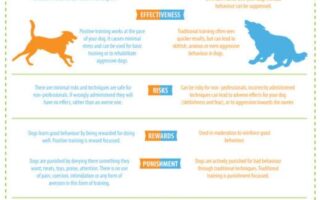Title: The Joyful Journey of Puppy Training: Building Bonds and Skills
Introduction:
Welcoming a puppy into your home is like opening a new chapter in the story of your life—filled with excitement, laughter, and a few inevitable challenges. These furry bundles of energy bring an abundance of joy, but with their playful spirit comes the responsibility of training. Puppy training is not just about teaching commands or proper behavior; it’s a dynamic process that lays the foundation for a lasting bond between you and your canine companion. In this article, we will explore the essential elements of puppy training, offering insights and practical tips to navigate this rewarding journey. Whether you’re a first-time owner or an experienced handler, understanding the nuances of puppy training will help you foster a harmonious relationship that enriches both your lives. Join us as we delve into the art of training, where patience, consistency, and love come together to transform your spirited pup into a well-mannered member of the family.
Table of Contents
- Building a Strong Foundation: Essential Commands for Every Puppy
- Socialization Strategies: Cultivating Confident Canines
- Positive Reinforcement Techniques: Creating a Rewarding Learning Experience
- Addressing Common Challenges: Solutions for a Smooth Training Journey
- Q&A
- To Wrap It Up
Building a Strong Foundation: Essential Commands for Every Puppy
Establishing a solid set of commands is crucial for every puppy’s development. These foundational commands not only enhance communication between you and your furry friend but also encourage good behavior. Some of the essential commands you should focus on include:
- Sit: A basic command that teaches your puppy to calm down and stay in one place.
- Stay: This command helps with impulse control, allowing your puppy to remain still and not rush towards distractions.
- Come: A vital command for safety, ensuring your puppy returns to you upon call.
- Leave it: This command teaches your puppy to ignore things that may be harmful or inappropriate.
When introducing these commands, consistency and positive reinforcement are essential. Use treats, praise, and affection to reward your puppy when they respond correctly. You may find it helpful to create a simple training schedule to track progress. Here’s a brief overview of how to structure your training sessions:
| Day | Command | Duration | Notes |
|---|---|---|---|
| Monday | Sit | 10 min | Start with treats for motivation |
| Wednesday | Stay | 15 min | Gradually increase distance |
| Friday | Come | 10 min | Practice in a secure area |
Socialization Strategies: Cultivating Confident Canines
Building a well-rounded, confident dog starts with effective socialization strategies. Early exposure to a variety of environments, sounds, and people is crucial for developing a pup’s adaptability and self-assurance. Here are some key approaches to enhance your puppy’s social experience:
- Positive Exposure: Introduce your puppy to new experiences gradually, ensuring they are exposed to different sights, sounds, and smells. This helps them build courage and resilience.
- Controlled Interactions: Organize playdates with dogs that are friendly and well-socialized. This allows your puppy to learn appropriate behaviors from others while having fun.
- Group Classes: Participate in puppy training classes where they can interact with other dogs and people in a controlled setting, reinforcing positive behaviors alongside guidance from a trainer.
- Frequent Outings: Take your puppy on trips to pet-friendly places like parks, cafes, and pet stores. This habitual exposure aids in developing their confidence around distractions.
Another effective technique is utilizing a structured socialization plan. Consider tracking your puppy’s progress with a simple table that notes various experiences and their responses. This can help you identify areas needing more focus:
| Experience | Response | Follow-up Action |
|---|---|---|
| Meeting new people | Curious but hesitant | Encourage gentle approach with treats |
| Playing with other dogs | Excited and playful | Arrange more playdates |
| Exposure to loud noises | Startled but quickly calmed | Gradually increase noise exposure |
Using these strategies and keeping track of your puppy’s reactions will foster a confident canines that enjoy social interactions throughout their lives.
Positive Reinforcement Techniques: Creating a Rewarding Learning Experience
When it comes to puppy training, the key to success lies in how you motivate your furry friend. Utilizing positive reinforcement techniques encourages desirable behaviors while strengthening the bond between you and your pet. Here are some effective strategies to create that rewarding learning experience:
- Treats: Use small, tasty treats that your puppy loves. Timing is crucial—reward them immediately for the desired action.
- Verbal Praise: Your enthusiasm matters. A cheerful tone and encouraging words can boost your puppy’s confidence.
- Playtime: Incorporate fun, interactive play as a reward for good behavior, making training sessions enjoyable.
Tracking your puppy’s progress can add a layer of motivation. Consider keeping a simple training log that details behaviors learned and rewards given, allowing you to adapt your methods effectively:
| Behavior | Reward Used | Date |
|---|---|---|
| Sit | Treat + Praise | 01/01/2023 |
| Stay | Playtime | 01/03/2023 |
| Come | Treat + Praise | 01/05/2023 |
By consistently applying these positive reinforcement techniques, you will create a fun and effective training environment for your puppy, leading to a well-mannered and happy pet.
Addressing Common Challenges: Solutions for a Smooth Training Journey
Training a puppy can sometimes feel overwhelming, but understanding and addressing common challenges can turn the experience into a rewarding journey. One frequent hurdle is inconsistency in commands and routines, which can confuse your dog. To tackle this, ensure that all family members are on the same page regarding training commands and schedules. Stick to a consistent set of cues like “sit,” “stay,” and “come,” and reinforce these commands with positive rewards. Regular, short training sessions are more effective than longer, infrequent ones, allowing your puppy to stay engaged without becoming frustrated.
Another common issue is dealing with distractions during training. Puppies are naturally curious and may find it difficult to focus in busy environments. To combat this, start training in a quiet space where there are minimal distractions, then gradually introduce more stimuli as your puppy becomes comfortable. Consider these practical strategies to enhance focus:
- Utilize high-value treats to keep your puppy motivated.
- Incorporate short play sessions between training to renew interest.
- Create a structured routine that includes training at the same time every day.
If you’re looking for a visual representation of successful strategies, consider the table below for a quick overview of training goals and their associated tips:
| Training Goal | Solution |
|---|---|
| Consistency in Commands | Align family on cues and schedules |
| Reducing Distractions | Start in quiet areas and gradually increase stimuli |
| Maintaining Engagement | Use high-value treats and structured routines |
Q&A
Q&A: Your Ultimate Guide to Puppy Training
Q1: What is the best age to start training my puppy?
A1: The ideal time to start training your puppy is as soon as you bring them home, typically around eight weeks old. At this young age, puppies are like sponges, ready to absorb new information. However, remember to keep training sessions short and fun; five to ten minutes is usually plenty!
Q2: What basic commands should I teach my puppy first?
A2: Start with the foundations! “Sit,” “stay,” “come,” and “down” are essential commands that can set the stage for more complex training later on. These basic commands not only help with obedience but also build a strong bond between you and your pup.
Q3: How can I motivate my puppy during training sessions?
A3: Puppies are often motivated by treats, toys, and praise. Experiment with different rewards to find what your pup responds to best. Consistency is key, so reward them immediately after they perform a desired behavior, reinforcing that their actions have positive outcomes.
Q4: What should I do if my puppy is not responding to training?
A4: Patience is your best friend! If your puppy seems disinterested or distracted, consider the training environment—too many distractions can make it hard for them to focus. Additionally, assess whether the training sessions are too long or if the chosen rewards aren’t enticing enough. Remember, every puppy learns at their own pace!
Q5: How do I handle behavioral issues like biting or chewing?
A5: Redirecting undesirable behaviors is a practical strategy. For biting, offer them appropriate toys to chew on when they start nipping. Praise them when they choose the right item! It’s essential to intervene calmly and assertively to help them understand what’s acceptable and what isn’t.
Q6: Are there specific training methods that work best?
A6: Positive reinforcement is widely regarded as the most effective training method. This approach rewards good behavior, encouraging your puppy to repeat those actions. Techniques such as clicker training can also be beneficial, helping to mark the exact moment your puppy does something right.
Q7: When should I seek professional puppy training?
A7: If you find yourself overwhelmed or if your puppy exhibits persistent issues—like severe aggression or anxiety—it might be time to consult a professional trainer. They can provide personalized guidance and strategies tailored to your puppy’s needs.
Q8: How long does it take to train a puppy?
A8: Training is an ongoing process, and varies greatly by breed, age, and individual personality. Generally, you may see basic commands mastered within a few weeks, but lifelong habits and good manners take time. Consistency and ongoing practice are crucial in instilling good behavior.
Q9: Can I train my puppy using online resources?
A9: Absolutely! There’s a wealth of videos and articles available online that can supplement your training efforts. Just ensure you follow tips from reputable sources and remain cautious of any outdated or negative training methods.
Q10: What’s the most important takeaway when training a puppy?
A10: Enjoy the journey! Puppy training should be a positive experience for both you and your furry friend. Celebrate the small victories, remain patient through challenges, and cherish the moments of bonding along the way. After all, a well-trained puppy leads to a happy home!
To Wrap It Up
As you embark on the rewarding journey of puppy training, remember that patience and consistency are your greatest allies. Each wag of their tail and curious sniff of the world around them is a testament to their growth and learning. Embrace the challenges and celebrate the small victories, for these moments are the foundation of the trusting bond you are building with your furry companion.
With every command learned and every lesson shared, you not only shape their behavior but also nurture a lifelong friendship filled with joy, companionship, and adventure. So gather your treats, prepare your heart, and dive into the enchanting world of puppy training—where every day is an opportunity for new beginnings and cherished memories. Your pup is ready to learn, and with your guidance, the possibilities are endless. Happy training!



